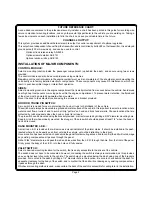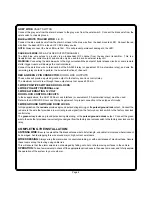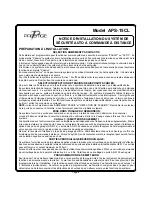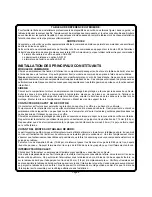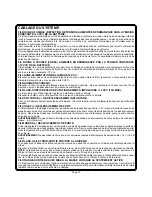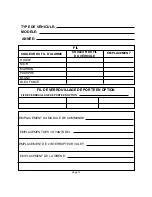
Page 4
DARK BLUE WIRE:
300 mA PULSED OUTPUT/CHANNEL 2
The dark blue wire pulses to ground via an independent RF channel from the keychain transmitter. This is a
transistorized, low current output, and should only be used to drive an external relay coil.
WARNING:
Connecting the dark blue wire to the high current switched output of trunk release circuits, or some remote
starter trigger inputs, will damage the control module.
Connect the dark blue wire to terminal 86 of the AS-9256 relay (or equivalent 30 A automotive relay), and wire the
remaining relay contacts to perform the selected function of channel 2.
RED & GREEN 2 PIN CONNECTOR:
DOOR LOCK OUTPUTS
These wires will provide a pulsed ground output to the factory door lock control relay.
The maximum current draw through these outputs must not exceed 300 mA.
3 WIRE POSITIVE SWITCHED DOOR LOCKS
4 WIRE POLARITY REVERSAL and
5 WIRE ALTERNATING 12 VOLT
DOOR LOCK CONTROL CIRCUITS
In these applications, the AS 9159 Door Lock Interface (or equivalent 30 A automotive relays) must be used.
Refer to the AUDIOVOX Door Lock Wiring Supplement, for proper connection to these types of circuits.
3 WIRE GROUND SWITCHED DOOR LOCKS
In this application, the
red wire
provides a ground pulse during arming, or the
pulsed ground lock
output. Connect the
red wire to the wire that provides a low current ground signal from the factory door lock switch to the factory door lock
control relay.
The
green wire
provides a ground pulse during disarming, or the
pulsed ground unlock
output. Connect the green
wire to the wire that provides a low current ground signal from the factory door unlock switch to the factory door lock control
relay.
GREY WIRE:
VALET SWITCH
Connect the grey wire from the alarm harness to the grey wire from the valet switch. Connect the black wire from the
valet switch to chassis ground.
BLUE w/WHITE TRACER WIRE:
L.E.D.
Connect the blue w/white wire from the alarm harness to the blue wire from the dash mounted LED. Connect the red
wire from the dash LED to a fused +12 VDC battery source.
NOTE:
Always connect the blue LED wire first. This will prevent permanent damage to the LED.
COMPLETING THE INSTALLATION:
ANTENNA WIRE:
Be sure to extend the thin black antenna wire to its full length, and cable tie into place where it cannot
be damaged. Avoid wrapping this wire around major, high current wire looms.
WIRE DRESSING:
Always wrap the alarm wires in convoluted tubing, or with a spiral wrap of electrical tape. Secure
these looms along the routing using cable ties.
This will ensure that the alarm wires are not damaged by falling onto hot or sharp moving surfaces in the vehicle.
OPERATION:
Take a few moments to check off the appropriate option boxes in the owner’s manual, and to fully explain
the operation of the system to your customer.



